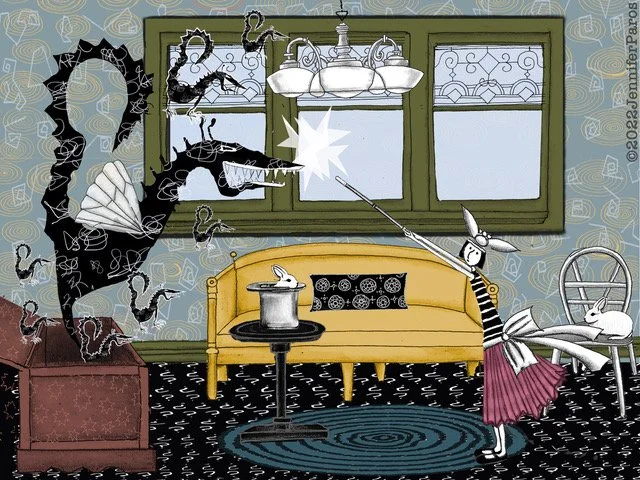How to Create a Problem and How to Undo It: The End of Chasing Answers
By Jennifer Paros
“The only way to ease our pain is to experience it fully. Learn to stay with uneasiness, learn to stay with the tightening, so that the habitual chain reaction doesn’t continue to rule your life.”
There is a video depicting a twelve-year-old girl suffering from a “Habit Cough” – a chronic condition in which the patient has an illness that involves coughing, but once the illness goes away the cough persists. For this young girl, her coughing was so constant she had to stop going to school. The video shows her working with a doctor using Suggestion Therapy. He explains there is no physiological reason for the cough – it’s more of an automatic response or reaction. He teaches her how to take control of the cough by showing her she can resist it for a few minutes at first, and then walking her through adding a minute at a time. She is to take deep, slow breaths and sip water when the impulse to cough comes. He tells her she has to concentrate; it’s the only way for her to gain control.
The girl inadvertently created a problem by habitually reacting to a feeling (in her throat). In our day-to-day lives, our reactions to things can create the same kind of effect and the same similar oppressive patterns that keep us feeling stuck. The areas in which we feel out of control have to do with us habitually reacting to our feelings, which is not the same as allowing ourselves to feel them.
The doctor teaches her to be aware of what she’s feeling, to slow down her response, to keep her mind from wandering. When our minds wander, we leave our responses on autopilot and the power of our focus becomes out of our conscious control. She doesn’t try to hold back the sensation, she pauses her reaction (coughing) to the sensation. The girl deconstructs her problem by letting the sensation be – that’s where the deep breaths come in. She walks herself out of the pattern of reaction – her only real problem – little by little, by practicing being aware of what she is feeling and her response.
Coughing, in this context, is like chasing an answer. We want the uncomfortable feeling to go away, but chasing the answer – not unlike habitually scratching an itch – creates more problem and we are left perpetually chasing. The doctor teaches her to refuse the impulse to go after the perceived problem. In learning to do this, she regains control and the problem fades.
“There is no limit to your creative power.”
The first step in creating a problem is to negatively judge our experience. Until that moment, we’re just having an experience. When we label something as a problem, it puts our mind in a contracted state, which does not support new ideas or insights. We live all kinds of things: our foot hurts, the toilet won’t flush, our kid resents us; work is hard. It’s understandable that we label these experiences as problems because they’re unwanted. But we don’t have to label them in order to best address them. The more we engage in negative judgment, the more burdened we feel and the harder life becomes. Seeing life through the lens of problem makes us perceive things as problems first; our day-to-day lives become an exercise in management and overcoming, rather than in expression, engagement, and creativity.
After the birth of my first child, I had a miscarriage. This unviable pregnancy became my main focus. It wasn’t just something that had happened, it was something to prevent from happening again, and something I feared might mean I would never have another child. My mind fixated. The subject was like a box, the contents of which I kept emptying and examining. The facts of the event had no power to help me. The baby idea was a creative project that didn’t work out; what I needed was to remember my power to create. I set up a small space away from everything - to make stuff. At the time, I was interested in stop-motion animation and took to building tiny furniture and a room with windows that opened and closed. I imagined a world and started feeling my strength again. I deconstructed the problem by purposefully using my focus and remembering my ability to create.
The curative factor in every problem is optimism. And authentic optimism only comes when we’re aware of our creative ability – because that’s our power. When we deliberately use and witness our creativity, regardless of what we make, we engage with life rather than trying to solve it. We stop the habitual reactions and start paying attention. We take those slow, deep breaths and allow ourselves to let the difficult moments pass and reclaim our ability to create what we want.
Jennifer Paros is a writer, illustrator, and author of Violet Bing and the Grand House (Viking, 2007). She lives in Seattle. Please visit her website.

